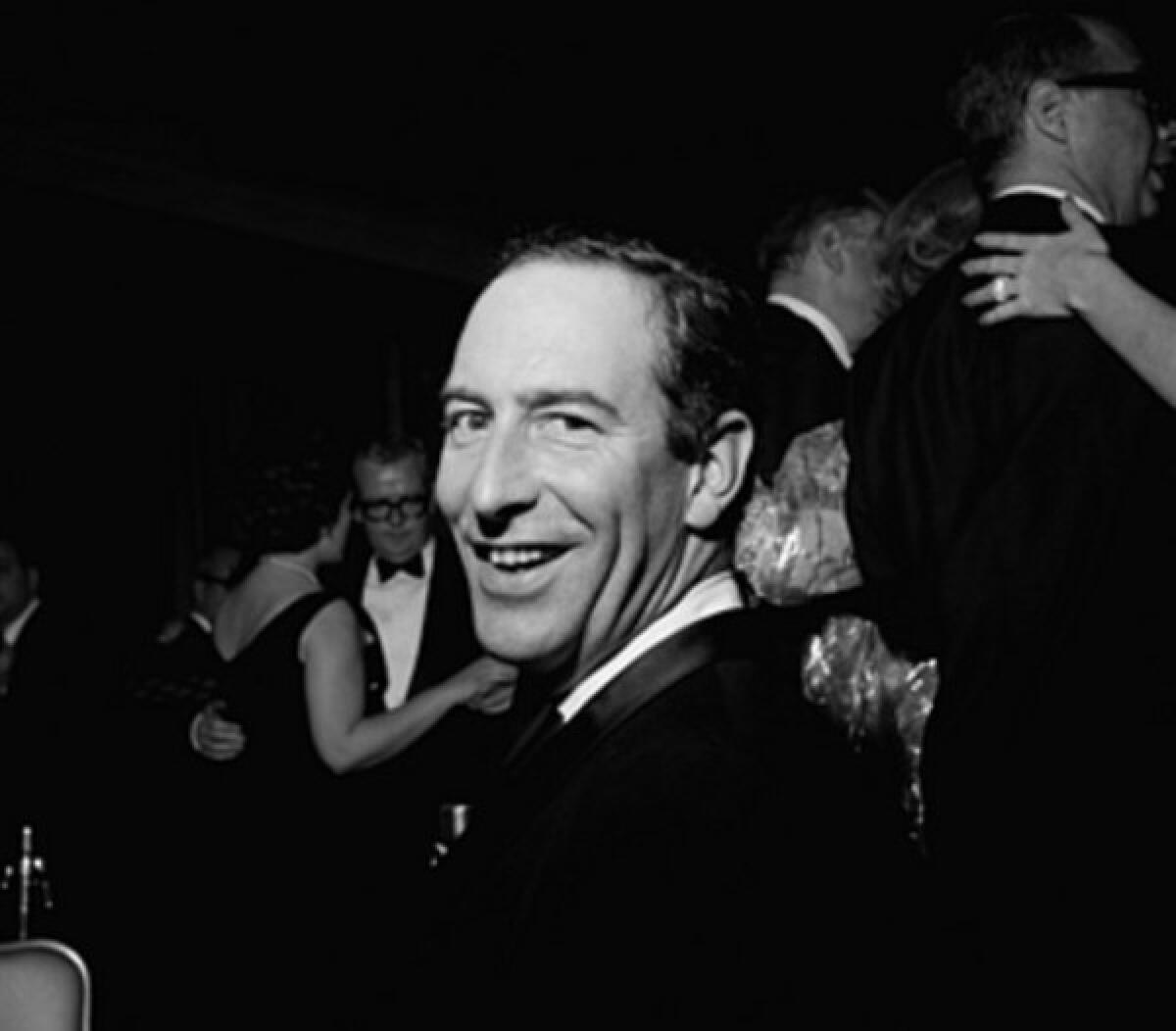Thomas Hoving dies at 78; controversial art world figure

- Share via
Thomas Hoving, a controversial fixture of the art world who turned New York’s Metropolitan Museum of Art into a hot spot during his decade as its director, helping to pioneer the blockbuster exhibitions that have transformed once-staid institutions into popular destinations, died Thursday at his New York City home. He was 78.
FOR THE RECORD:
Thomas Hoving obituary: In Friday’s Section A, the obituary of Metropolitan Museum of Art Director Thomas Hoving said “investment banker Robert Lehman gave the museum $7 million to re-create his New York apartment, including his art collection, inside the museum.” The museum paid $7.1 million to construct a wing for the donated collection, based on the Lehman family home. —
The cause of death was lung cancer, said his wife, Nancy.
Known as a passionate self-promoter who rejoiced in trampling on museum conventions, Hoving prided himself on blowing cobwebs out of the Fifth Avenue institution. He took charge of the Met at 35 and presided over a tumultuous period, from 1967 to 1977, when the museum was often in the news for making showy gestures, receiving large donations, landing major acquisitions and expanding its facilities.
Determined to broaden the audience for visual art, Hoving played a leading role in bringing the first tour of Egyptian treasures from the tomb of Tutankhamen to the United States in the 1970s. At the Met, he also packed in crowds for exhibitions such as “From the Lands of the Scythians,” a 1975 show of gold objects largely borrowed from the State Hermitage Museum in St. Petersburg, Russia.
“We are still working out of the model he set,” said Michael Govan, director of the Los Angeles County Museum of Art. “Beyond blockbusters, it’s the fundamental assumption that our museums have to be open and accessible to the public. That’s his legacy, and it’s a very important one.”
A charismatic but complicated character who was well schooled in art, Hoving was admired as a visionary and reviled as a huckster, willing to sell out to big donors or cheapen the experience of art with flashy tactics. In one frequently criticized deal, investment banker Robert Lehman gave the Met $7 million to re-create his New York apartment, including his art collection, inside the museum. The complex of galleries opened in 1975 and continues to function as a sort of shrine to the collector.
But Hoving oversaw a decade of vigorous development, when the museum opened new galleries for Islamic art, remodeled its Egyptian wing and launched an ambitious expansion that has enlarged showcases for American, African and Oceanic art. The museum’s collections also grew enormously on his watch, although one spectacular purchase -- a 2,500-year-old vase by the Greek master painter Euphronios, acquired in 1972 for $1 million -- turned out to have been illegally exported. In 2006, the museum agreed to return it to Italy in exchange for loans of other ancient objects.
In the 1980s, while editing Connoisseur magazine, Hoving emerged as a muckraking but effective critic of the J. Paul Getty Museum’s collecting of antiquities. He revealed a tax fraud scheme perpetrated by former antiquities curator Jiri Frel, denounced the museum’s Greek kouros as a fake and claimed that other major works had been smuggled out of their homelands. In the last few years, the Getty has returned dozens of objects to their countries of origin and struck agreements with Italy for art loans and collaborative projects.
But James Wood, a longtime director of the Art Institute of Chicago who stepped in to lead the Getty Trust in 2006 after a period of fiscal and administrative turmoil, called Hoving an important mentor.
“I owe a great deal to Tom Hoving as he hired me for my first museum job in 1967,” Wood said in a statement. “The following four years at the Metropolitan Museum were invaluable as I tried, as a young art history graduate, to comprehend, digest, and critically evaluate the radical transformations he was pioneering in the museum world.”
Born in New York in 1931, Thomas Pearsall Field Hoving was the son of merchandiser Walter Hoving. Educated in art at Princeton University, he began his career at the Met as a curatorial assistant in 1959 and became head of the department of medieval art and the Cloisters in 1965.
He veered off track in 1966, briefly serving as parks commissioner for New York Mayor John V. Lindsay. But in 1967, soon after the unexpected death of the Met’s director, James Rorimer, Hoving became his successor. He left the Met a decade later, intending to lead a new branch of the University of Pennsylvania’s Annenberg School for Communication, but the plan failed to materialize. Hoving spent the rest of his life writing and pursuing art-related projects.
His best-known book, “Making the Mummies Dance,” is an irreverent account of his years at the Met. His most recent memoir, “The Artful Tommy,” published on Artnet.com, concludes a rollicking story with a sober assessment:
“What I should have done is something else. I should have forced myself to be less aggressive, less selfish, less solipsistic, less feisty. . . . My heavily-cleverly disguised low self-regard manifested itself in my constant showing off, my addiction for publicity and my intolerable ‘me-me-me’ attitudes and actions.
“But it’s done, isn’t it? And no one can really change, can they? And, hey, it has been a lot of fun being the life-long irresponsible, snarky, nasty art scamp. The ‘Artful Tommy’ will never change -- and perhaps shouldn’t.”
In addition to his wife, Hoving is survived by his sister, Petrea, of New York and his daughter, also named Petrea, and her three daughters, who live in London.
Times staff writer Jason Felch contributed to this report.
More to Read
The biggest entertainment stories
Get our big stories about Hollywood, film, television, music, arts, culture and more right in your inbox as soon as they publish.
You may occasionally receive promotional content from the Los Angeles Times.










